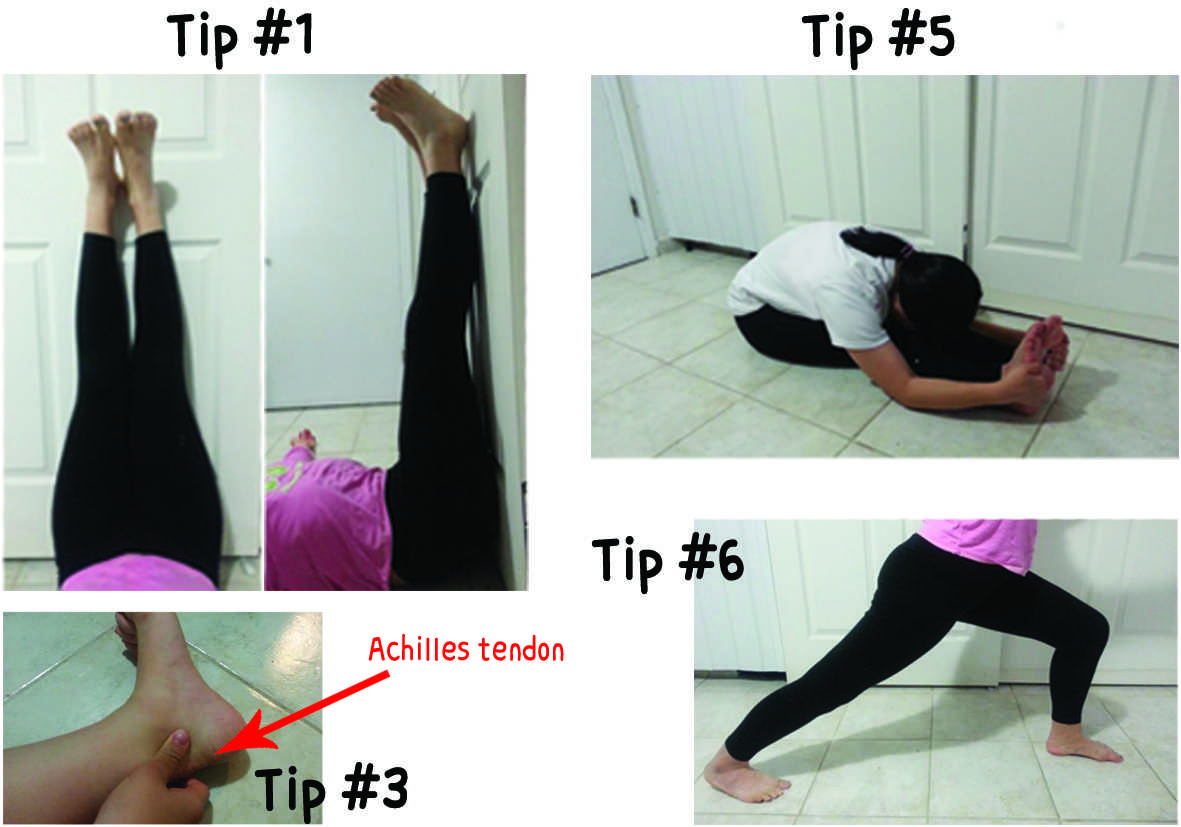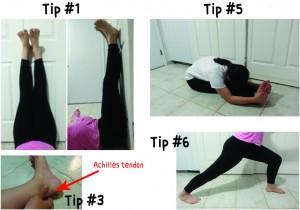How to unswell swollen legs

“My legs get sore after I walk, but not swollen. Maybe it’s because I work out. I also stretch a great deal. I believe stretching is a contributing factor to my legs not swelling. It makes my muscles more flexible,” junior Brianna Pistone said. Photo attributions to Evil Erin.

by Kay Kim, staff reporter
A long trip on an airplane can cause leg swelling, but that can be treated with a few simple tips. On a plane ride, calves may feel tight and cause the feet to expand. Not everyone experiences this, but it is not rare.
An increase in age can cause leg swelling. With age, valves in the leg veins start to weaken, making it harder for blood to circulate from the legs to the heart. This forms varicose veins, which may cause the fluids to leak into the tissues, causing swelling. Therefore, it is more common among adults than adolescents and teenagers.
According to class 631, the students who rode a plane were not seated still long enough to feel their feet or leg expand.
“My legs get sore after I walk, but not swollen. Maybe it’s because I work out. I also stretch a great deal. I believe stretching is a contributing factor to my legs not swelling. It makes my muscles more flexible,” junior Brianna Pistone said.
Why legs swell
There are many reasons as to why legs swell. Generally, legs get swollen due to problems with the circulatory system, the lymphatic system, and the kidneys.
Circulatory problems are caused by improper circulation of the blood. Thrombophlebitis or blood clotting are a couple of examples.
The Lymphatic system is a network in the body that helps get rid of the body’s toxin. Problems, such as lymphedema can cause bloatedness.
Scarring or failure of the kidneys are a contributing factor. Medical conditions include, but are not limited to acute kidney failure, chronic kidney disease, cirrhosis, etc.
Swollen legs can also be seen on a normal basis, even without severe medical problems. Standing or sitting for too long causes the blood in the heart to rush to the legs resulting in poor circulation. Therefore, it becomes difficult for the blood to circulate back up to the heart. As the blood is gathered at the legs, especially the calves, they often swell.
“My feet expand on a plane. I take my shoes off, socks off and put on my flip flops. Then put my legs up in the front chair,” paraprofessional Ms. Vasquez said.
Another cause is stress and unhealthy diets which can lead to an imbalance in hormones. Unhealthy diet plans such as starving yourself and binge eating disturbs the nutrition intake.
How to unswell the legs
There are easy at-home tips to help unswell legs.
- Lift your legs straight up against the wall. Create a 90° angle with your torso and your legs. Keep in this position for 20 minutes. This will help circulate the blood back to the heart and get rid of toxins that piled on your legs.
- Sleep with a pillow under your ankles and calves. Your legs should be at an altitude that is higher than your chest.
- Take two fingers and knead your Achilles tendon.
- Use the tips of your fingers to lightly squeeze and move your fingers up and down your calves. Putting on body lotion or body oil on your legs make it easier to massage.
- Sit flat on the ground with your legs straight out in front of you. Bend forward and pull your toes backwards so that your feet and the ground is perpendicular to each other. There will be a stretch on your calves and hamstrings.
- Stand up straight. Pull your right leg back and keep it straight. Bend your left leg to create a 90° angle. Hold for at least 10 seconds. Do the same for the opposite leg.
- Sit on a chair and cross your legs. Gently press down on your calves with your knees.
- Dip your feet in hot water. You can also take hot baths. Hot water will help break down the toxins in your legs.
- Consume less salt. Sodium retains water in the body, which causes bloating. Eating too much salt will cause serious bloating.
“Swelling usually happens to older people. Elevation is most important. Put pillows under your kneecap and keep them higher than your heart,” ninth grade teacher Ms. Byrne said.
It is important to constantly knead your calves whenever time is available. If toxins in the leg are not kneaded or massaged out, they will add to bodily mass. Therefore, legs will appear thicker than they are. However, if the tips are followed, it will help release toxins to help prevent swelling in the legs.
